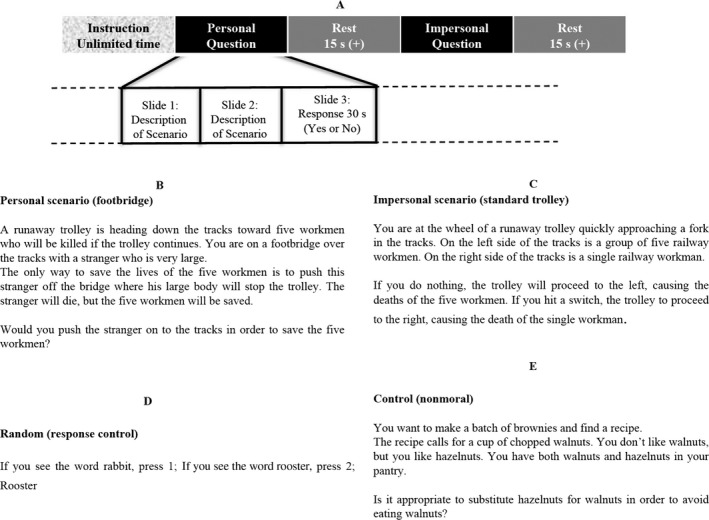Figure 2.

(a) The MJ paradigm for this study. Each question consisted of three slides: the first two slides described a scenario, the third one included a MJ question in which subject had 30 s to respond, and then a 15 s resting period. The participant answered “Yes” or “No” by pressing “1” or “2” on the keyboard, respectively. “Yes” indicated they were for the action presented. (b) Shows a sample personal scenario, which has a utilitarian response. (c) Shows an impersonal scenario, which also has a utilitarian response. (d) To control for random responses, subjects were asked to press “1” if they saw one word and press “2” if they saw another word. (e) Nonmoral control questions. (d) and € ensured the subject was paying attention and reading the scenarios throughout the task. Accuracy on these slides controlled for random responses and fatigue. (f) Shows an example of the three slides presented to participants in this MJ task
